Análise do Medion S10 OLED: O laptop multimídia com painel OLED e Core Ultra 7
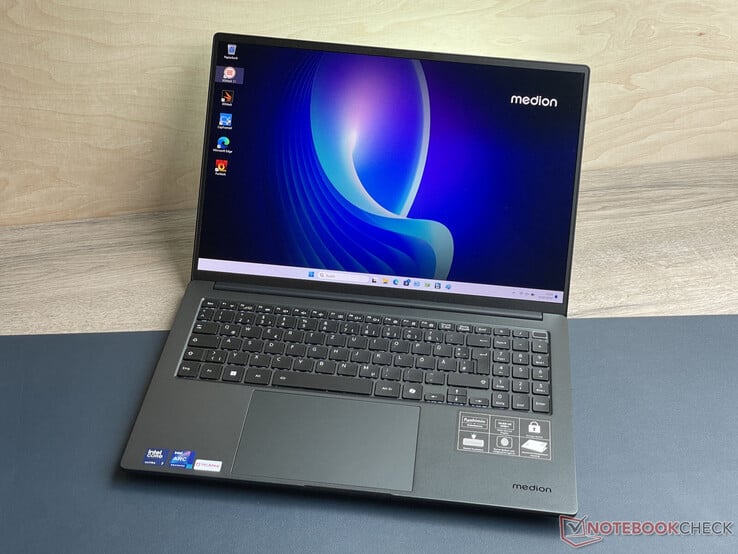
O S10 OLED da Medion é um laptop multimídia fino e compacto com 16 polegadas. Ele possui um Core Ultra 7 155H, 16 GB de RAM, um SSD de 1 TB e uma tela OLED rica em contraste. Os concorrentes incluem dispositivos como o Apple MacBook Air 15, Lenovo IdeaPad Pro 5 16IMH G9, Samsung Galaxy Book4 Edge 16, Xiaomi RedmiBook Pro 16 2024 e o Samsung Galaxy Book4 Pro 16.
Possíveis concorrentes em comparação
Avaliação | Versão | Data | Modelo | Peso | Altura | Size | Resolução | Preço |
|---|---|---|---|---|---|---|---|---|
| 76.7 % | v8 | 07/2024 | Medion S10 OLED Ultra 7 155H, Arc 8-Core | 1.6 kg | 17.8 mm | 16.00" | 3840x2400 | |
| 87.9 % v7 (old) | v7 (old) | 05/2024 | Lenovo IdeaPad Pro 5 16IMH G9 Ultra 7 155H, Arc 8-Core | 1.9 kg | 17.5 mm | 16.00" | 2560x1600 | |
| 80.2 % | v8 | 07/2024 | Samsung Galaxy Book4 Edge 16 SD X Elite X1E-80-100, Adreno X1-85 3.8 TFLOPS | 1.5 kg | 12.3 mm | 16.00" | 2880x1800 | |
| 89.7 % v7 (old) | v7 (old) | 04/2024 | Xiaomi RedmiBook Pro 16 2024 Ultra 7 155H, Arc 8-Core | 1.9 kg | 15.9 mm | 16.00" | 3072x1920 | |
| 88.9 % v7 (old) | v7 (old) | 04/2024 | Samsung Galaxy Book4 Pro 16 Ultra 7 155H, Arc 8-Core | 1.5 kg | 12.5 mm | 16.00" | 2880x1800 | |
| 91.6 % v7 (old) | v7 (old) | 03/2024 | Apple MacBook Air 15 M3 M3, M3 10-Core GPU | 1.5 kg | 11.5 mm | 15.60" | 2880x1664 |
Os Top 10
» Os Top 10 Portáteis Multimídia
» Os Top 10 Portáteis de Jogos
» Os Top 10 Portáteis Leves para Jogos
» Os Top 10 Portáteis Acessíveis de Escritório/Empresariais
» Os Top 10 Portáteis Premium de Escritório/Empresariais
» Os Top 10 dos Portáteis Workstation
» Os Top 10 Subportáteis
» Os Top 10 Ultrabooks
» Os Top 10 Conversíveis
» Os Top 10 Tablets
» Os Top 10 Smartphones
» A melhores Telas de Portáteis Analisadas Pela Notebookcheck
» Top 10 dos portáteis abaixo dos 500 Euros da Notebookcheck
» Top 10 dos Portáteis abaixo dos 300 Euros
Observação: Atualizamos recentemente nosso sistema de classificação e os resultados da versão 8 não são comparáveis aos resultados da versão 7. Mais informações estão disponíveis aqui.
Case e conectividade - Não há USB 4 no S10
A Medion reuniu a tecnologia do S10 em um gabinete de metal compacto e elegante (liga de alumínio-magnésio) com molduras finas. A cor usada (cinza-escuro-antracite-preto) destaca a aparência séria do laptop. O dispositivo foi bem construído e pesa cerca de 1,6 kg, o que está no mesmo nível da concorrência. Sua estabilidade e rigidez são ótimas. O ângulo máximo de abertura da tampa é de cerca de 160 graus.
Ele tem um total de 5 portas USB (3x USB-A, 2x USB-C) - infelizmente, elas só funcionam de acordo com o padrão USB 3.2 Gen 1. Um dispositivo com a pretensão do S10 deveria, pelo menos, oferecer aos usuários USB 4 ou Thunderbolt 4, até para poder usar uma GPU externa, se necessário. No entanto, suas portas USB-C suportam DP Alt-Mode e Power Delivery - nós testamos. Portanto, o laptop oferece um total de três saídas de vídeo (1x HDMI, 2x DP).
O módulo sem fio do laptop abriga um chip WiFi 6E (Intel AX211), que oferece taxas de dados boas a muito boas em geral. A webcam integrada (2,1 MP) é bastante comum, mas ganha pontos com seu botão liga/desliga. Faltam uma porta Gigabit Ethernet e um leitor de cartões.
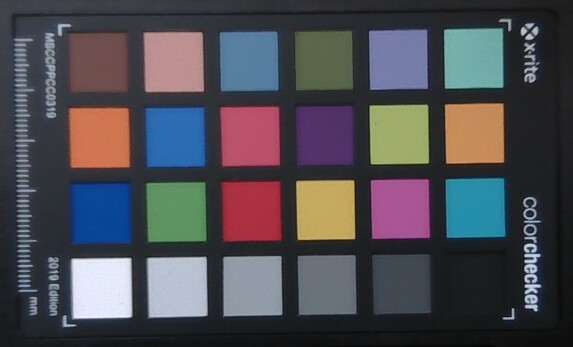
Sustentabilidade
O material de embalagem do dispositivo consiste principalmente em papelão e papel. A quantidade de plástico utilizada é limitada: A unidade de fonte de alimentação está em uma bolsa transparente e o laptop está em uma bolsa de fibra feita de PET reciclado. A parte interna da tampa de papelão é coberta por uma fina camada de espuma. O senhor deve ser capaz de realizar trabalhos de manutenção e reparo - o hardware fica acessível após a remoção da placa de base. As atualizações de software devem ser garantidas para os próximos anos por meio da função de atualização do Windows. A Medion ainda não forneceu nenhum driver ou software para o laptop em seu site. Portanto, recomendamos que o senhor faça o backup da pasta de drivers na partição de recuperação.
Dispositivos de entrada - O S10 tem teclas com luz de fundo
A Medion instalou um teclado chiclet retroiluminado com um teclado numérico de três colunas no laptop. Suas teclas côncavas (curso curto, ponto de pressão claro) são decentes para digitar, mas sua resistência poderia ser um pouco mais nítida. O teclado não balança para frente e para trás durante a digitação. As teclas de seta e as duas teclas "Enter" são bem pequenas. Por outro lado, o clickpad multitoque com uma superfície de vidro tem um tamanho generoso (aprox. 14 x 9,6 cm).
Tela - OLED, DCI-P3, 16:10
A tela de 16 polegadas (3.840 x 2.400 pixels) com uma proporção de 16:10 oferece tempos de resposta curtos, típicos do OLED, e um ótimo nível de preto. A superfície reflexiva da tela, combinada com uma luminosidade um pouco acima da meta, infelizmente limita o S10 ao uso em ambientes internos. A leitura em ambientes externos só seria possível à sombra ou em um dia nublado. Nosso dispositivo de medição registrou cintilação da tela (60 Hz) em todos os níveis de brilho. Isso se deve ao controle de brilho do painel.
| |||||||||||||||||||||||||
iluminação: 96 %
iluminação com acumulador: 307 cd/m²
Contraste: 30700:1 (Preto: 0.01 cd/m²)
ΔE Color 2.1 | 0.5-29.43 Ø4.87, calibrated: 2.08
ΔE Greyscale 0.9 | 0.5-98 Ø5.1
98.6% AdobeRGB 1998 (Argyll 2.2.0 3D)
100% sRGB (Argyll 2.2.0 3D)
99.9% Display P3 (Argyll 2.2.0 3D)
Gamma: 2.197
| Medion S10 OLED Samsung SDC4174, OLED, 3840x2400, 16", 60 Hz | Lenovo IdeaPad Pro 5 16IMH G9 NE160QDM-NY2, IPS, 2560x1600, 16", 120 Hz | Samsung Galaxy Book4 Edge 16 ATNA60CL07-0, OLED, 2880x1800, 16", 120 Hz | Xiaomi RedmiBook Pro 16 2024 TL160MDMP03_0, IPS, 3072x1920, 16", 165 Hz | LG gram Pro 16Z90SP ATNA60CL06-0, OLED, 2880x1800, 16", 120 Hz | Samsung Galaxy Book4 Pro 16 ATNA60CL07-0, OLED, 2880x1800, 16", 120 Hz | Apple MacBook Air 15 M3 IPS, 2880x1664, 15.6", 60 Hz | |
|---|---|---|---|---|---|---|---|
| Display | -25% | -0% | -3% | -1% | -0% | -4% | |
| Display P3 Coverage | 99.9 | 63.3 -37% | 99.5 0% | 98.8 -1% | 99.8 0% | 99.5 0% | 98.7 -1% |
| sRGB Coverage | 100 | 95.2 -5% | 100 0% | 100 0% | 100 0% | 100 0% | 99.9 0% |
| AdobeRGB 1998 Coverage | 98.6 | 65.3 -34% | 97.5 -1% | 89.9 -9% | 94.6 -4% | 97.5 -1% | 87.8 -11% |
| Response Times | -709% | 138% | -1575% | -150% | 138% | -1495% | |
| Response Time Grey 50% / Grey 80% * | 1.7 ? | 15 ? -782% | 0.64 ? 62% | 39.2 ? -2206% | 6 ? -253% | 0.64 ? 62% | 35.3 ? -1976% |
| Response Time Black / White * | 1.4 ? | 10.3 ? -636% | 0.68 ? 51% | 14.6 ? -943% | 14 ? -900% | 0.68 ? 51% | 15.6 ? -1014% |
| PWM Frequency | 60 ? | 240 ? 300% | 481 702% | 240 ? 300% | |||
| Screen | -383% | 18% | -418% | 18% | 18% | -393% | |
| Brightness middle | 307 | 368 20% | 385 25% | 520 69% | 420 37% | 385 25% | 526 71% |
| Brightness | 307 | 368 20% | 391 27% | 510 66% | 421 37% | 391 27% | 506 65% |
| Brightness Distribution | 96 | 91 -5% | 97 1% | 93 -3% | 99 3% | 97 1% | 92 -4% |
| Black Level * | 0.01 | 0.31 -3000% | 0.35 -3400% | 0.006 40% | 0.37 -3600% | ||
| Contrast | 30700 | 1187 -96% | 1486 -95% | 70000 128% | 1422 -95% | ||
| Colorchecker dE 2000 * | 2.1 | 2.4 -14% | 1.1 48% | 2.9 -38% | 1.66 21% | 1.1 48% | 1.4 33% |
| Colorchecker dE 2000 max. * | 4.87 | 6.5 -33% | 1.8 63% | 6.2 -27% | 4.92 -1% | 1.8 63% | 2 59% |
| Colorchecker dE 2000 calibrated * | 2.08 | 0.8 62% | 1.1 47% | 3.39 -63% | 0.6 71% | ||
| Greyscale dE 2000 * | 0.9 | 4.5 -400% | 1.4 -56% | 4.3 -378% | 1.3 -44% | 1.4 -56% | 2.1 -133% |
| Gamma | 2.197 100% | 2.21 100% | 2.24 98% | 2.19 100% | 2.27 97% | 2.24 98% | 2.23 99% |
| CCT | 6513 100% | 6324 103% | 6444 101% | 7422 88% | 6609 98% | 6444 101% | 6865 95% |
| Média Total (Programa/Configurações) | -372% /
-353% | 52% /
43% | -665% /
-494% | -44% /
-20% | 52% /
43% | -631% /
-467% |
* ... menor é melhor
A precisão das cores é fornecida: Os três espaços de cores comuns (AdobeRGB, sRGB, DCI-P3) podem ser reproduzidos completamente ou quase completamente. O monitor também oferece uma boa reprodução de cores assim que sai da caixa: com um desvio de aproximadamente 2,1, a meta (DeltaE < 3) é atingida. A calibração não resulta em nenhuma melhoria.
Exibir tempos de resposta
| ↔ Tempo de resposta preto para branco | ||
|---|---|---|
| 1.4 ms ... ascensão ↗ e queda ↘ combinadas | ↗ 0.7 ms ascensão | |
| ↘ 0.7 ms queda | ||
| A tela mostra taxas de resposta muito rápidas em nossos testes e deve ser muito adequada para jogos em ritmo acelerado. Em comparação, todos os dispositivos testados variam de 0.1 (mínimo) a 240 (máximo) ms. » 6 % de todos os dispositivos são melhores. Isso significa que o tempo de resposta medido é melhor que a média de todos os dispositivos testados (20.8 ms). | ||
| ↔ Tempo de resposta 50% cinza a 80% cinza | ||
| 1.7 ms ... ascensão ↗ e queda ↘ combinadas | ↗ 0.9 ms ascensão | |
| ↘ 0.8 ms queda | ||
| A tela mostra taxas de resposta muito rápidas em nossos testes e deve ser muito adequada para jogos em ritmo acelerado. Em comparação, todos os dispositivos testados variam de 0.165 (mínimo) a 636 (máximo) ms. » 6 % de todos os dispositivos são melhores. Isso significa que o tempo de resposta medido é melhor que a média de todos os dispositivos testados (32.5 ms). | ||
Cintilação da tela / PWM (modulação por largura de pulso)
| Tela tremeluzindo/PWM detectado | 60 Hz Amplitude: 90 % | ≤ 100 % configuração de brilho | |
A luz de fundo da tela pisca em 60 Hz (pior caso, por exemplo, utilizando PWM) Cintilação detectada em uma configuração de brilho de 100 % e abaixo. Não deve haver cintilação ou PWM acima desta configuração de brilho. A frequência de 60 Hz é muito baixa, portanto a oscilação pode causar fadiga ocular e dores de cabeça após uso prolongado. [pwm_comparison] Em comparação: 53 % de todos os dispositivos testados não usam PWM para escurecer a tela. Se PWM foi detectado, uma média de 8516 (mínimo: 5 - máximo: 343500) Hz foi medida. | |||
Desempenho - O Meteor Lake às vezes é lento
Graças ao Meteor Lake, o notebook fino de 16 polegadas oferece potência de computação suficiente para aplicativos de escritório e multimídia, além de alguns jogos econômicos. Esse dispositivo de teste está disponível por cerca de US$ 1.400. Um modelo com um Core i5-13420H (Raptor Lake), SSD de 512 GB e tela QHD+ (IPS) custa a partir de US$ 870.
Condições de teste
O laptop não oferece nenhum perfil de desempenho proprietário. Os perfis padrão do Windows (consulte a tabela) estão disponíveis - usamos o perfil balanceado (benchmarks, teste de bateria). Não foi possível determinar nenhuma diferença de desempenho entre os perfis.
| Melhor desempenho | Balanceado | Melhor economia de energia | |
|---|---|---|---|
| Limite de energia 1 (HWInfo) | 45 watts | 45 watts | 45 watts |
| Limite de potência 2 (HWInfo) | 60 watts | 60 watts | 60 watts |
| Ruído (CP 2077 Phantom) | - | 42 dB (A) | - |
| Desempenho (CP 2077 Phantom) | - | 14 fps | - |
Processador
O Core Ultra 7 155Hos 16 núcleos de CPU do Core Ultra 7 155H (6P, 8E, 2LPE; Meteor Lake) têm um total de 22 threads. A CPU reage à carga contínua de vários threads (loop CB15) com desenvolvimento constante de desempenho. Os valores de benchmark resultantes estão no mesmo nível da média da CPU.
Cinebench R15 Multi continuous test
* ... menor é melhor
AIDA64: FP32 Ray-Trace | FPU Julia | CPU SHA3 | CPU Queen | FPU SinJulia | FPU Mandel | CPU AES | CPU ZLib | FP64 Ray-Trace | CPU PhotoWorxx
| Performance Rating | |
| Lenovo IdeaPad Pro 5 16IMH G9 | |
| Xiaomi RedmiBook Pro 16 2024 | |
| Média da turma Multimedia | |
| Medion S10 OLED | |
| Samsung Galaxy Book4 Pro 16 | |
| Média Intel Core Ultra 7 155H | |
| LG gram Pro 16Z90SP | |
| Samsung Galaxy Book4 Edge 16 | |
| AIDA64 / FP32 Ray-Trace | |
| Lenovo IdeaPad Pro 5 16IMH G9 | |
| Média da turma Multimedia (5121 - 50388, n=73, últimos 2 anos) | |
| Medion S10 OLED | |
| Xiaomi RedmiBook Pro 16 2024 | |
| Samsung Galaxy Book4 Pro 16 | |
| Média Intel Core Ultra 7 155H (6670 - 18470, n=50) | |
| LG gram Pro 16Z90SP | |
| Samsung Galaxy Book4 Edge 16 | |
| AIDA64 / FPU Julia | |
| Lenovo IdeaPad Pro 5 16IMH G9 | |
| Xiaomi RedmiBook Pro 16 2024 | |
| Medion S10 OLED | |
| Média da turma Multimedia (14528 - 201874, n=74, últimos 2 anos) | |
| Média Intel Core Ultra 7 155H (40905 - 93181, n=50) | |
| Samsung Galaxy Book4 Pro 16 | |
| LG gram Pro 16Z90SP | |
| Samsung Galaxy Book4 Edge 16 | |
| AIDA64 / CPU SHA3 | |
| Lenovo IdeaPad Pro 5 16IMH G9 | |
| Xiaomi RedmiBook Pro 16 2024 | |
| Média da turma Multimedia (1188 - 8623, n=74, últimos 2 anos) | |
| Medion S10 OLED | |
| Samsung Galaxy Book4 Pro 16 | |
| Média Intel Core Ultra 7 155H (1940 - 4436, n=50) | |
| LG gram Pro 16Z90SP | |
| Samsung Galaxy Book4 Edge 16 | |
| AIDA64 / CPU Queen | |
| Média da turma Multimedia (21547 - 181505, n=74, últimos 2 anos) | |
| Xiaomi RedmiBook Pro 16 2024 | |
| Lenovo IdeaPad Pro 5 16IMH G9 | |
| LG gram Pro 16Z90SP | |
| Samsung Galaxy Book4 Pro 16 | |
| Média Intel Core Ultra 7 155H (64698 - 94181, n=50) | |
| Medion S10 OLED | |
| Samsung Galaxy Book4 Edge 16 | |
| AIDA64 / FPU SinJulia | |
| Lenovo IdeaPad Pro 5 16IMH G9 | |
| Xiaomi RedmiBook Pro 16 2024 | |
| Média da turma Multimedia (1240 - 28794, n=74, últimos 2 anos) | |
| Samsung Galaxy Book4 Pro 16 | |
| Média Intel Core Ultra 7 155H (5639 - 10647, n=50) | |
| Medion S10 OLED | |
| LG gram Pro 16Z90SP | |
| Samsung Galaxy Book4 Edge 16 | |
| AIDA64 / FPU Mandel | |
| Lenovo IdeaPad Pro 5 16IMH G9 | |
| Medion S10 OLED | |
| Média da turma Multimedia (9903 - 105740, n=73, últimos 2 anos) | |
| Xiaomi RedmiBook Pro 16 2024 | |
| Samsung Galaxy Book4 Pro 16 | |
| Média Intel Core Ultra 7 155H (18236 - 47685, n=50) | |
| LG gram Pro 16Z90SP | |
| Samsung Galaxy Book4 Edge 16 | |
| AIDA64 / CPU AES | |
| Lenovo IdeaPad Pro 5 16IMH G9 | |
| Média Intel Core Ultra 7 155H (45713 - 152179, n=50) | |
| Média da turma Multimedia (26066 - 169946, n=74, últimos 2 anos) | |
| Xiaomi RedmiBook Pro 16 2024 | |
| LG gram Pro 16Z90SP | |
| Medion S10 OLED | |
| Samsung Galaxy Book4 Edge 16 | |
| Samsung Galaxy Book4 Pro 16 | |
| AIDA64 / CPU ZLib | |
| Lenovo IdeaPad Pro 5 16IMH G9 | |
| Xiaomi RedmiBook Pro 16 2024 | |
| LG gram Pro 16Z90SP | |
| Medion S10 OLED | |
| Samsung Galaxy Book4 Pro 16 | |
| Média da turma Multimedia (440 - 2022, n=74, últimos 2 anos) | |
| Média Intel Core Ultra 7 155H (557 - 1250, n=50) | |
| Samsung Galaxy Book4 Edge 16 | |
| AIDA64 / FP64 Ray-Trace | |
| Lenovo IdeaPad Pro 5 16IMH G9 | |
| Média da turma Multimedia (2759 - 26875, n=74, últimos 2 anos) | |
| Medion S10 OLED | |
| Xiaomi RedmiBook Pro 16 2024 | |
| Samsung Galaxy Book4 Pro 16 | |
| Média Intel Core Ultra 7 155H (3569 - 9802, n=50) | |
| Samsung Galaxy Book4 Edge 16 | |
| LG gram Pro 16Z90SP | |
| AIDA64 / CPU PhotoWorxx | |
| Lenovo IdeaPad Pro 5 16IMH G9 | |
| Xiaomi RedmiBook Pro 16 2024 | |
| LG gram Pro 16Z90SP | |
| Samsung Galaxy Book4 Pro 16 | |
| Média Intel Core Ultra 7 155H (32719 - 54223, n=50) | |
| Média da turma Multimedia (12860 - 58844, n=74, últimos 2 anos) | |
| Medion S10 OLED | |
| Samsung Galaxy Book4 Edge 16 | |
Desempenho do sistema
Os aplicativos de escritório, internet e multimídia, bem como os jogos econômicos, não causam problemas para o sistema de execução suave. Os benchmarks do sistema confirmam um bom nível de desempenho. A concorrência equipada com a mesma CPU geralmente tem um desempenho melhor - limites de potência mais altos e RAM LPDDR5X muito rápida e permanentemente soldada se destacam aqui. O Medion S10, por outro lado, conta com uma RAM DDR5-5600 modular. O diagrama a seguir ilustra as diferenças de velocidade.
CrossMark: Overall | Productivity | Creativity | Responsiveness
WebXPRT 3: Overall
WebXPRT 4: Overall
Mozilla Kraken 1.1: Total
| PCMark 10 / Score | |
| Lenovo IdeaPad Pro 5 16IMH G9 | |
| Xiaomi RedmiBook Pro 16 2024 | |
| Média da turma Multimedia (4325 - 8670, n=70, últimos 2 anos) | |
| Samsung Galaxy Book4 Pro 16 | |
| Média Intel Core Ultra 7 155H, Intel Arc 8-Core iGPU (4809 - 7529, n=34) | |
| Medion S10 OLED | |
| LG gram Pro 16Z90SP | |
| PCMark 10 / Essentials | |
| Lenovo IdeaPad Pro 5 16IMH G9 | |
| Samsung Galaxy Book4 Pro 16 | |
| Xiaomi RedmiBook Pro 16 2024 | |
| Média da turma Multimedia (8025 - 12420, n=70, últimos 2 anos) | |
| Média Intel Core Ultra 7 155H, Intel Arc 8-Core iGPU (7605 - 11289, n=34) | |
| Medion S10 OLED | |
| LG gram Pro 16Z90SP | |
| PCMark 10 / Productivity | |
| Média da turma Multimedia (6089 - 10615, n=70, últimos 2 anos) | |
| Lenovo IdeaPad Pro 5 16IMH G9 | |
| Média Intel Core Ultra 7 155H, Intel Arc 8-Core iGPU (6042 - 10591, n=34) | |
| Xiaomi RedmiBook Pro 16 2024 | |
| Samsung Galaxy Book4 Pro 16 | |
| Medion S10 OLED | |
| LG gram Pro 16Z90SP | |
| PCMark 10 / Digital Content Creation | |
| Xiaomi RedmiBook Pro 16 2024 | |
| Lenovo IdeaPad Pro 5 16IMH G9 | |
| Média da turma Multimedia (3651 - 13548, n=70, últimos 2 anos) | |
| Média Intel Core Ultra 7 155H, Intel Arc 8-Core iGPU (4985 - 10709, n=34) | |
| Samsung Galaxy Book4 Pro 16 | |
| Medion S10 OLED | |
| LG gram Pro 16Z90SP | |
| CrossMark / Overall | |
| Xiaomi RedmiBook Pro 16 2024 | |
| Samsung Galaxy Book4 Pro 16 | |
| Média da turma Multimedia (866 - 2255, n=81, últimos 2 anos) | |
| Medion S10 OLED | |
| Média Intel Core Ultra 7 155H, Intel Arc 8-Core iGPU (1366 - 1903, n=34) | |
| Lenovo IdeaPad Pro 5 16IMH G9 | |
| LG gram Pro 16Z90SP | |
| Samsung Galaxy Book4 Edge 16 | |
| CrossMark / Productivity | |
| Xiaomi RedmiBook Pro 16 2024 | |
| Samsung Galaxy Book4 Pro 16 | |
| Medion S10 OLED | |
| Média da turma Multimedia (913 - 2050, n=81, últimos 2 anos) | |
| Média Intel Core Ultra 7 155H, Intel Arc 8-Core iGPU (1291 - 1798, n=33) | |
| Lenovo IdeaPad Pro 5 16IMH G9 | |
| LG gram Pro 16Z90SP | |
| Samsung Galaxy Book4 Edge 16 | |
| CrossMark / Creativity | |
| Média da turma Multimedia (907 - 2795, n=81, últimos 2 anos) | |
| Xiaomi RedmiBook Pro 16 2024 | |
| Samsung Galaxy Book4 Pro 16 | |
| Lenovo IdeaPad Pro 5 16IMH G9 | |
| Média Intel Core Ultra 7 155H, Intel Arc 8-Core iGPU (1519 - 1929, n=33) | |
| Medion S10 OLED | |
| LG gram Pro 16Z90SP | |
| Samsung Galaxy Book4 Edge 16 | |
| CrossMark / Responsiveness | |
| Xiaomi RedmiBook Pro 16 2024 | |
| Medion S10 OLED | |
| Samsung Galaxy Book4 Pro 16 | |
| Média da turma Multimedia (605 - 2094, n=81, últimos 2 anos) | |
| Média Intel Core Ultra 7 155H, Intel Arc 8-Core iGPU (939 - 1802, n=33) | |
| Samsung Galaxy Book4 Edge 16 | |
| LG gram Pro 16Z90SP | |
| Lenovo IdeaPad Pro 5 16IMH G9 | |
| WebXPRT 3 / Overall | |
| Samsung Galaxy Book4 Edge 16 | |
| Média da turma Multimedia (136.4 - 545, n=81, últimos 2 anos) | |
| Lenovo IdeaPad Pro 5 16IMH G9 | |
| Xiaomi RedmiBook Pro 16 2024 | |
| Média Intel Core Ultra 7 155H, Intel Arc 8-Core iGPU (252 - 299, n=34) | |
| Samsung Galaxy Book4 Pro 16 | |
| Medion S10 OLED | |
| LG gram Pro 16Z90SP | |
| WebXPRT 4 / Overall | |
| Samsung Galaxy Book4 Edge 16 | |
| Média da turma Multimedia (133.2 - 353, n=75, últimos 2 anos) | |
| Lenovo IdeaPad Pro 5 16IMH G9 | |
| Samsung Galaxy Book4 Pro 16 | |
| Xiaomi RedmiBook Pro 16 2024 | |
| Média Intel Core Ultra 7 155H, Intel Arc 8-Core iGPU (166.4 - 309, n=29) | |
| LG gram Pro 16Z90SP | |
| Medion S10 OLED | |
| Mozilla Kraken 1.1 / Total | |
| LG gram Pro 16Z90SP | |
| Medion S10 OLED | |
| Medion S10 OLED | |
| Média Intel Core Ultra 7 155H, Intel Arc 8-Core iGPU (517 - 614, n=35) | |
| Samsung Galaxy Book4 Pro 16 | |
| Xiaomi RedmiBook Pro 16 2024 | |
| Lenovo IdeaPad Pro 5 16IMH G9 | |
| Média da turma Multimedia (254 - 1016, n=86, últimos 2 anos) | |
| Samsung Galaxy Book4 Edge 16 | |
* ... menor é melhor
| PCMark 10 Score | 6247 pontos | |
Ajuda | ||
| AIDA64 / Memory Copy | |
| Lenovo IdeaPad Pro 5 16IMH G9 | |
| Xiaomi RedmiBook Pro 16 2024 | |
| Samsung Galaxy Book4 Pro 16 | |
| LG gram Pro 16Z90SP | |
| Média Intel Core Ultra 7 155H (62397 - 96791, n=50) | |
| Média da turma Multimedia (21158 - 104459, n=74, últimos 2 anos) | |
| Medion S10 OLED | |
| Samsung Galaxy Book4 Edge 16 | |
| AIDA64 / Memory Read | |
| Samsung Galaxy Book4 Edge 16 | |
| Samsung Galaxy Book4 Pro 16 | |
| Lenovo IdeaPad Pro 5 16IMH G9 | |
| Xiaomi RedmiBook Pro 16 2024 | |
| Média Intel Core Ultra 7 155H (60544 - 90647, n=50) | |
| LG gram Pro 16Z90SP | |
| Medion S10 OLED | |
| Média da turma Multimedia (24312 - 125604, n=74, últimos 2 anos) | |
| AIDA64 / Memory Write | |
| Lenovo IdeaPad Pro 5 16IMH G9 | |
| LG gram Pro 16Z90SP | |
| Samsung Galaxy Book4 Pro 16 | |
| Média Intel Core Ultra 7 155H (58692 - 93451, n=50) | |
| Média da turma Multimedia (23679 - 117933, n=74, últimos 2 anos) | |
| Xiaomi RedmiBook Pro 16 2024 | |
| Medion S10 OLED | |
| Samsung Galaxy Book4 Edge 16 | |
| AIDA64 / Memory Latency | |
| LG gram Pro 16Z90SP | |
| Média Intel Core Ultra 7 155H (116.2 - 233, n=50) | |
| Medion S10 OLED | |
| Xiaomi RedmiBook Pro 16 2024 | |
| Lenovo IdeaPad Pro 5 16IMH G9 | |
| Samsung Galaxy Book4 Pro 16 | |
| Média da turma Multimedia (7 - 346, n=74, últimos 2 anos) | |
| Samsung Galaxy Book4 Edge 16 | |
* ... menor é melhor
Latências de DPC
| DPC Latencies / LatencyMon - interrupt to process latency (max), Web, Youtube, Prime95 | |
| Medion S10 OLED | |
| LG gram Pro 16Z90SP | |
| Samsung Galaxy Book4 Pro 16 | |
| Lenovo IdeaPad Pro 5 16IMH G9 | |
| Xiaomi RedmiBook Pro 16 2024 | |
* ... menor é melhor
Dispositivos de armazenamento
O SSD PCIe 4 (M.2-2280, 1 TB) da Phison oferece boas taxas de transferência, mas não está entre as pontas de lança dos SSDs. Pontos positivos: Não notamos nenhum estrangulamento induzido termicamente. O S10 tem um segundo slot para SSD.
* ... menor é melhor
Reading continuous performance: DiskSpd Read Loop, Queue Depth 8
Placa de vídeo
Embora o processador ofereça um nível de desempenho razoavelmente bom, o processador Intel Arc 8 iGPU da Intel fica aquém de seu potencial. Os concorrentes equipados com a mesma GPU obtiveram resultados de 30 a 50% melhores nos benchmarks e na execução de jogos. Por quê? Em primeiro lugar, a GPU do S10 nunca atinge sua taxa de clock máxima (2.250 MHz) e, em segundo lugar, os concorrentes têm uma RAM mais rápida (DDR5-5600 vs. LPDDR5X-7466) integrada.
A GPU pode lidar com muitos jogos econômicos, mesmo com desempenho reduzido, mas as configurações precisam ser reduzidas. É possível manter taxas de quadros estáveis, como comprovado pelo Cyberpunk 2077 Phantom.
| 3DMark 11 Performance | 9522 pontos | |
| 3DMark Fire Strike Score | 5865 pontos | |
| 3DMark Time Spy Score | 2962 pontos | |
| 3DMark Steel Nomad Light Score | 2356 pontos | |
Ajuda | ||
| V-Ray 5 Benchmark - CPU | |
| Medion S10 OLED | |
| Média Intel Arc 8-Core iGPU (8067 - 13309, n=18) | |
| Média da turma Multimedia (3126 - 19998, n=34, últimos 2 anos) | |
| Samsung Galaxy Book4 Edge 16 | |
* ... menor é melhor
| Cyberpunk 2077 2.2 Phantom Liberty - 1920x1080 Ultra Preset (FSR off) | |
| Média da turma Multimedia (8.26 - 86, n=63, últimos 2 anos) | |
| LG gram Pro 16Z90SP | |
| LG gram Pro 16Z90SP | |
| Lenovo IdeaPad Pro 5 16IMH G9 | |
| Xiaomi RedmiBook Pro 16 2024 | |
| Samsung Galaxy Book4 Pro 16 | |
| Média Intel Arc 8-Core iGPU (13 - 24.7, n=26) | |
| Samsung Galaxy Book4 Edge 16 | |
| Medion S10 OLED | |
| GTA V - 1920x1080 Highest Settings possible AA:4xMSAA + FX AF:16x | |
| Média da turma Multimedia (9.38 - 141.6, n=77, últimos 2 anos) | |
| Samsung Galaxy Book4 Edge 16 | |
| Lenovo IdeaPad Pro 5 16IMH G9 | |
| Xiaomi RedmiBook Pro 16 2024 | |
| Média Intel Arc 8-Core iGPU (9.59 - 20.6, n=37) | |
| Samsung Galaxy Book4 Pro 16 | |
| Medion S10 OLED | |
Cyberpunk 2077 ultra FPS diagram
| baixo | média | alto | ultra | QHD | 4K | |
|---|---|---|---|---|---|---|
| GTA V (2015) | 144 | 131.8 | 32.3 | 11.4 | 9.23 | 9.14 |
| Dota 2 Reborn (2015) | 95.1 | 83.4 | 64.1 | 60.6 | 31.8 | |
| Final Fantasy XV Benchmark (2018) | 51.9 | 29.7 | 20.9 | 15.9 | 8.98 | |
| X-Plane 11.11 (2018) | 47.6 | 36 | 30.2 | 19.3 | ||
| Strange Brigade (2018) | 129.8 | 51.1 | 43.8 | 35.6 | 25.7 | 14.2 |
| Baldur's Gate 3 (2023) | 22.1 | 17.6 | 15.4 | 14.7 | 10.4 | 5.42 |
| Cyberpunk 2077 2.2 Phantom Liberty (2023) | 23.3 | 19 | 16.3 | 14.2 | 9.21 |
Emissões e energia - Valores ruins
Emissões de ruído
Apesar de sua potência de computação reduzida, o S10 produz um pouco mais de ruído do que a concorrência: Com carga total, observamos níveis de som de até 48 dB(A), enquanto o Cyberpunk funcionou com 42 dB(A). Em geral, ele poderia ser mais silencioso. Durante o uso diário, as duas ventoinhas são bastante resistentes.
Barulho
| Ocioso |
| 26 / 27 / 28 dB |
| Carga |
| 43 / 48 dB |
 | ||
30 dB silencioso 40 dB(A) audível 50 dB(A) ruidosamente alto |
||
min: | ||
| Medion S10 OLED Arc 8-Core, Ultra 7 155H, Phison PS5019-E19 SSO1TBITC4-E19-V7 | Lenovo IdeaPad Pro 5 16IMH G9 Arc 8-Core, Ultra 7 155H, Samsung PM9C1a MZAL81T0HDLB | Samsung Galaxy Book4 Edge 16 Adreno X1-85 3.8 TFLOPS, SD X Elite X1E-80-100, Kioxia THGJFJT2T85BAT01 | Xiaomi RedmiBook Pro 16 2024 Arc 8-Core, Ultra 7 155H, YMTC PC300-1TB | LG gram Pro 16Z90SP GeForce RTX 3050 4GB Laptop GPU, Ultra 7 155H, Samsung PM9A1 MZVL21T0HCLR | Samsung Galaxy Book4 Pro 16 Arc 8-Core, Ultra 7 155H, Samsung PM9B1 512GB MZVL4512HBLU | |
|---|---|---|---|---|---|---|
| Noise | 4% | 17% | 12% | 3% | 8% | |
| desligado / ambiente * | 25 | 24.1 4% | 24.6 2% | 24.4 2% | 25.2 -1% | 24.6 2% |
| Idle Minimum * | 26 | 24.1 7% | 24.6 5% | 24.4 6% | 25.2 3% | 24.6 5% |
| Idle Average * | 27 | 24.1 11% | 24.6 9% | 24.4 10% | 26.3 3% | 24.6 9% |
| Idle Maximum * | 28 | 28.2 -1% | 24.6 12% | 24.4 13% | 26.7 5% | 26.4 6% |
| Load Average * | 43 | 44.4 -3% | 28.1 35% | 32 26% | 31.8 26% | 40 7% |
| Cyberpunk 2077 ultra * | 42 | 32.4 23% | 52 -24% | |||
| Load Maximum * | 48 | 44.4 7% | 32.4 32% | 39.7 17% | 45.1 6% | 40 17% |
| Witcher 3 ultra * | 36.5 | 30.6 | 40 |
* ... menor é melhor
Temperatura
A temperatura aumenta significativamente sob carga total: Registramos valores acima de 50 °C em vários pontos de medição. Os valores foram menores durante a execução do Cyberpunk. As temperaturas do apoio para as mãos estavam sempre dentro da faixa verde. Em suma, o S10 esquenta mais do que a concorrência.
O teste de estresse (Prime95 e Furmark em operação contínua) verifica a estabilidade do sistema sob carga total. A CPU operou inicialmente em velocidades (< 3 GHz) bem abaixo do clock base, e o núcleo gráfico funcionou a 750 MHz. Em seguida, o clock da CPU oscilou entre 1 e 2,5 GHz. Assim que a CPU reduziu a taxa de clock, a taxa de clock da GPU aumentou para 1,4-1,5 GHz.
(-) A temperatura máxima no lado superior é 55 °C / 131 F, em comparação com a média de 36.9 °C / 98 F , variando de 21.1 a 71 °C para a classe Multimedia.
(-) A parte inferior aquece até um máximo de 55 °C / 131 F, em comparação com a média de 39.2 °C / 103 F
(+) Em uso inativo, a temperatura média para o lado superior é 29.1 °C / 84 F, em comparação com a média do dispositivo de 31.3 °C / ### class_avg_f### F.
(-) 3: The average temperature for the upper side is 38.4 °C / 101 F, compared to the average of 31.3 °C / 88 F for the class Multimedia.
(+) Os apoios para as mãos e o touchpad são mais frios que a temperatura da pele, com um máximo de 30 °C / 86 F e, portanto, são frios ao toque.
(±) A temperatura média da área do apoio para as mãos de dispositivos semelhantes foi 28.8 °C / 83.8 F (-1.2 °C / -2.2 F).
| Medion S10 OLED Intel Core Ultra 7 155H, Intel Arc 8-Core iGPU | Lenovo IdeaPad Pro 5 16IMH G9 Intel Core Ultra 7 155H, Intel Arc 8-Core iGPU | Samsung Galaxy Book4 Edge 16 Qualcomm Snapdragon X Elite X1E-80-100, Qualcomm SD X Adreno X1-85 3.8 TFLOPS | Xiaomi RedmiBook Pro 16 2024 Intel Core Ultra 7 155H, Intel Arc 8-Core iGPU | LG gram Pro 16Z90SP Intel Core Ultra 7 155H, NVIDIA GeForce RTX 3050 4GB Laptop GPU | Samsung Galaxy Book4 Pro 16 Intel Core Ultra 7 155H, Intel Arc 8-Core iGPU | |
|---|---|---|---|---|---|---|
| Heat | 27% | 17% | 19% | 3% | 24% | |
| Maximum Upper Side * | 55 | 36.3 34% | 44.3 19% | 40.3 27% | 49 11% | 40.9 26% |
| Maximum Bottom * | 55 | 39.1 29% | 51.6 6% | 45.9 17% | 48.5 12% | 42.6 23% |
| Idle Upper Side * | 32 | 24.9 22% | 25.1 22% | 26.3 18% | 33.5 -5% | 24.5 23% |
| Idle Bottom * | 33 | 26.1 21% | 25.8 22% | 27.9 15% | 35 -6% | 24.8 25% |
* ... menor é melhor
Alto-falantes
Os alto-falantes estéreo produzem um som decente, mas quase sem graves.
Medion S10 OLED análise de áudio
(+) | os alto-falantes podem tocar relativamente alto (###valor### dB)
Graves 100 - 315Hz
(-) | quase nenhum baixo - em média 17.3% menor que a mediana
(±) | a linearidade dos graves é média (9.5% delta para a frequência anterior)
Médios 400 - 2.000 Hz
(+) | médios equilibrados - apenas 4.3% longe da mediana
(+) | médios são lineares (4.3% delta para frequência anterior)
Altos 2 - 16 kHz
(+) | agudos equilibrados - apenas 1.2% longe da mediana
(+) | os máximos são lineares (5% delta da frequência anterior)
Geral 100 - 16.000 Hz
(+) | o som geral é linear (12.9% diferença em relação à mediana)
Comparado com a mesma classe
» 21% de todos os dispositivos testados nesta classe foram melhores, 4% semelhantes, 74% piores
» O melhor teve um delta de 5%, a média foi 18%, o pior foi 45%
Comparado com todos os dispositivos testados
» 11% de todos os dispositivos testados foram melhores, 3% semelhantes, 87% piores
» O melhor teve um delta de 4%, a média foi 24%, o pior foi 134%
Lenovo IdeaPad Pro 5 16IMH G9 análise de áudio
(±) | o volume do alto-falante é médio, mas bom (###valor### dB)
Graves 100 - 315Hz
(-) | quase nenhum baixo - em média 22.3% menor que a mediana
(±) | a linearidade dos graves é média (10.5% delta para a frequência anterior)
Médios 400 - 2.000 Hz
(+) | médios equilibrados - apenas 2.6% longe da mediana
(+) | médios são lineares (4.6% delta para frequência anterior)
Altos 2 - 16 kHz
(+) | agudos equilibrados - apenas 1.2% longe da mediana
(+) | os máximos são lineares (3.9% delta da frequência anterior)
Geral 100 - 16.000 Hz
(+) | o som geral é linear (13.9% diferença em relação à mediana)
Comparado com a mesma classe
» 27% de todos os dispositivos testados nesta classe foram melhores, 4% semelhantes, 69% piores
» O melhor teve um delta de 5%, a média foi 18%, o pior foi 45%
Comparado com todos os dispositivos testados
» 14% de todos os dispositivos testados foram melhores, 4% semelhantes, 82% piores
» O melhor teve um delta de 4%, a média foi 24%, o pior foi 134%
Consumo de energia
Em geral, o consumo do laptop está em um nível normal para o hardware instalado. No entanto, o S10 requer mais energia do que os concorrentes no modo inativo. Enquanto o Cyberpunk foi executado com consumo de energia constante, a demanda flutuou e diminuiu durante o teste de estresse. A fonte de alimentação (90 watts) ainda é suficiente em tamanho. O aumento da demanda do dispositivo no início do teste de estresse não causou nenhum problema.
| desligado | |
| Ocioso | |
| Carga |
|
Key:
min: | |
| Medion S10 OLED Intel Core Ultra 7 155H, Intel Arc 8-Core iGPU | Lenovo IdeaPad Pro 5 16IMH G9 Intel Core Ultra 7 155H, Intel Arc 8-Core iGPU | Samsung Galaxy Book4 Edge 16 Qualcomm Snapdragon X Elite X1E-80-100, Qualcomm SD X Adreno X1-85 3.8 TFLOPS | Xiaomi RedmiBook Pro 16 2024 Intel Core Ultra 7 155H, Intel Arc 8-Core iGPU | LG gram Pro 16Z90SP Intel Core Ultra 7 155H, NVIDIA GeForce RTX 3050 4GB Laptop GPU | Samsung Galaxy Book4 Pro 16 Intel Core Ultra 7 155H, Intel Arc 8-Core iGPU | |
|---|---|---|---|---|---|---|
| Power Consumption | 15% | 39% | -2% | -21% | 38% | |
| Idle Minimum * | 7 | 3.5 50% | 4.2 40% | 4.2 40% | 10.15 -45% | 3.6 49% |
| Idle Average * | 10 | 9.6 4% | 5.6 44% | 11.6 -16% | 11.65 -17% | 5.7 43% |
| Idle Maximum * | 19 | 9.9 48% | 7.8 59% | 12.3 35% | 14.33 25% | 6.1 68% |
| Load Average * | 52 | 62.7 -21% | 28.3 46% | 61.9 -19% | 67.5 -30% | 52.5 -1% |
| Cyberpunk 2077 ultra external monitor * | 49.2 | 38.2 22% | ||||
| Cyberpunk 2077 ultra * | 53.2 | 38.8 27% | 85.3 -60% | |||
| Load Maximum * | 95 | 101.2 -7% | 61.9 35% | 140.6 -48% | 91.7 3% | 64.7 32% |
| Witcher 3 ultra * | 55.8 | 57 | 46.6 |
* ... menor é melhor
Power consumption Cyberpunk / stress test
Power consumption with external monitor
Tempos de execução
A Medion promete uma duração de até 8 horas (reprodução de vídeo). Isso parece realista para nós: O S10 terminou nosso teste de WiFi (mapeando a carga ao acessar sites usando um script) após 7:16 horas. Esse é o pior valor entre os notebooks no campo de comparação - tanto em termos absolutos quanto em termos de watt-hora.
Pro
Contra
Veredicto - Não é um caso completo
O S10 possui um painel OLED (4k, DCI-P3, 16 polegadas, 16:10), dois slots de SSD, RAM modular, uma caixa de metal elegante e compacta, bem como duas portas USB-C (Power Delivery, DP Alt-Mode). Uma CPU Meteor Lake atual oferece os níveis de desempenho esperados. Além disso, o laptop não pesa muito.
O conceito do Medion S10 OLED é intrigante. Ele é supostamente um notebook multimídia, mas esse é precisamente o ponto fraco do dispositivo.
Sua Arc iGPU tem um desempenho bem abaixo de suas possibilidades - como resultado, o aspecto multimídia desse laptop é negado. Como a Medion não instalou o USB 4/Thunderbolt 4, o senhor não tem nem mesmo a opção de compensar isso conectando uma GPU externa - o laptop só possui portas USB 3.2 Gen 1 lentas.
Apesar do desempenho reduzido, ele às vezes é mais barulhento e quente do que os concorrentes. O mesmo pode ser dito sobre o consumo de energia no modo inativo. O laptop da Medion também tem uma desvantagem quando se trata de seu tempo de execução. Em geral, essas falhas não deveriam existir em um laptop que custa US$ 1.400.
Uma alternativa poderia ser o Lenovo IdeaPad Pro 5 16IMH G9. Ele oferece mais capacidade de computação, tempos de execução muito melhores e uma porta USB-4. Sua RAM é soldada e não pode ser trocada - mas o mesmo pode ser dito da maioria dos concorrentes.
Preço e disponibilidade
O MRSP do Medion S10 OLED está em torno de US$ 1.400. No momento em que este artigo foi escrito, o laptop não estava disponível para compra on-line nos Estados Unidos.
Observação: Atualizamos recentemente nosso sistema de classificação e os resultados da versão 8 não são comparáveis aos resultados da versão 7. Mais informações estão disponíveis aqui.
Medion S10 OLED
- 07/29/2024 v8
Sascha Mölck
Transparência
A seleção dos dispositivos a serem analisados é feita pela nossa equipe editorial. A amostra de teste foi fornecida ao autor como empréstimo pelo fabricante ou varejista para fins desta revisão. O credor não teve influência nesta revisão, nem o fabricante recebeu uma cópia desta revisão antes da publicação. Não houve obrigação de publicar esta revisão. Nunca aceitamos compensação ou pagamento em troca de nossas avaliações. Como empresa de mídia independente, a Notebookcheck não está sujeita à autoridade de fabricantes, varejistas ou editores.
É assim que o Notebookcheck está testando
Todos os anos, o Notebookcheck analisa de forma independente centenas de laptops e smartphones usando procedimentos padronizados para garantir que todos os resultados sejam comparáveis. Desenvolvemos continuamente nossos métodos de teste há cerca de 20 anos e definimos padrões da indústria no processo. Em nossos laboratórios de teste, equipamentos de medição de alta qualidade são utilizados por técnicos e editores experientes. Esses testes envolvem um processo de validação em vários estágios. Nosso complexo sistema de classificação é baseado em centenas de medições e benchmarks bem fundamentados, o que mantém a objetividade.



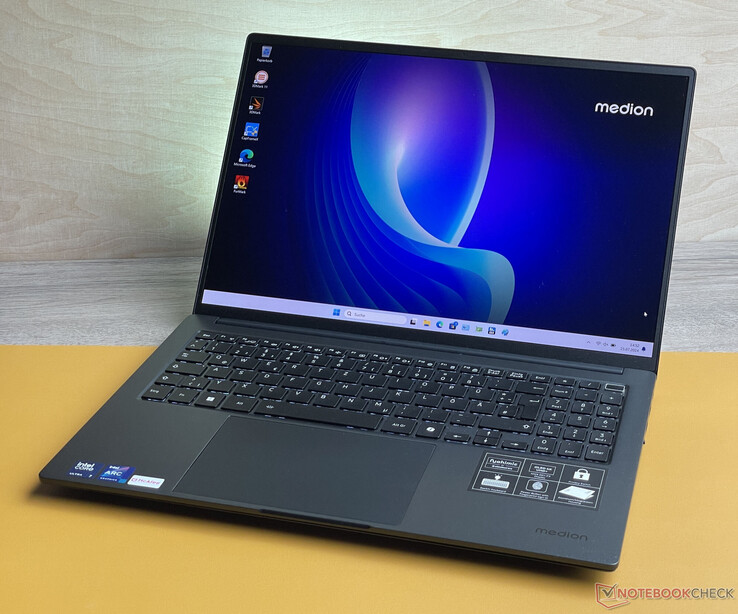
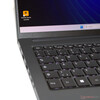












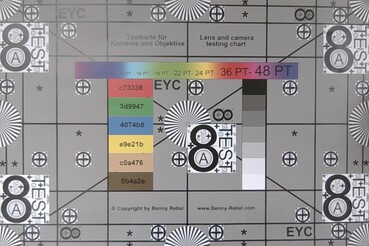

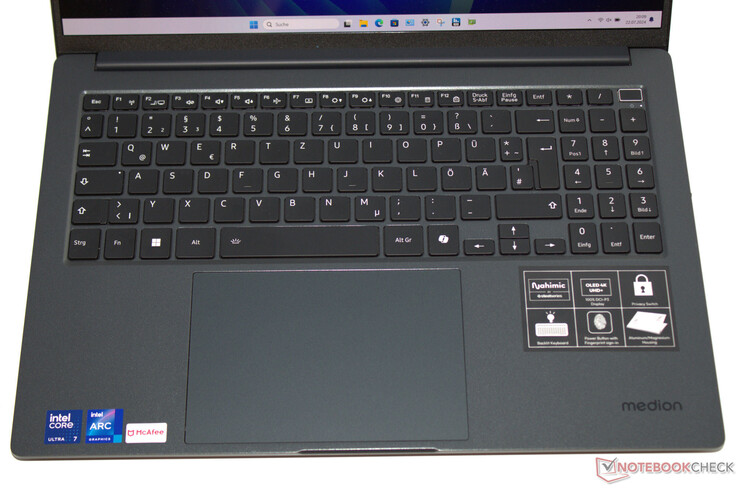

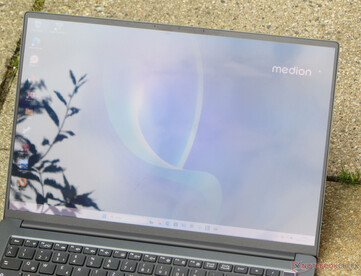
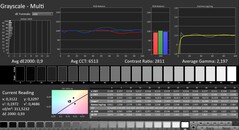
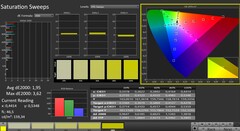
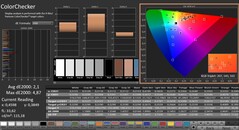
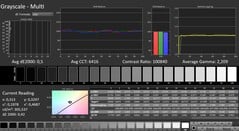
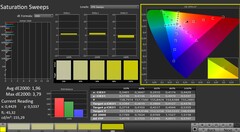
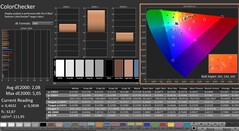
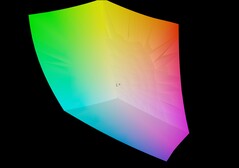
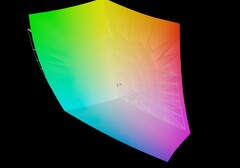
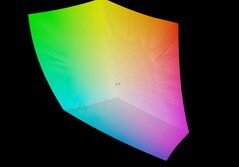
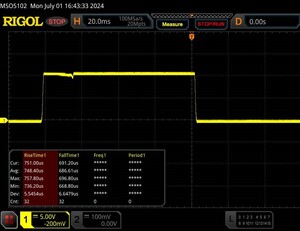
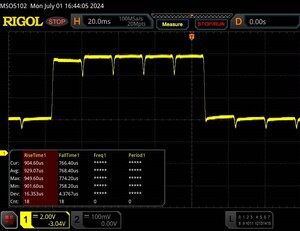
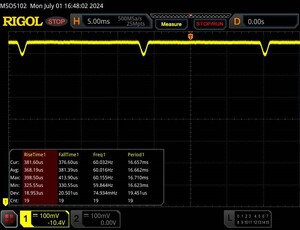
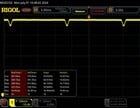
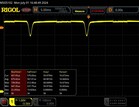
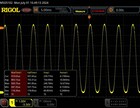
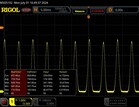

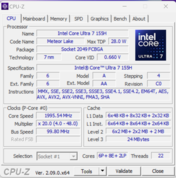
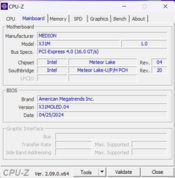
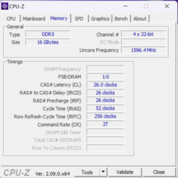
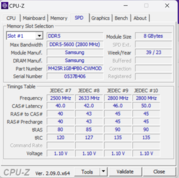
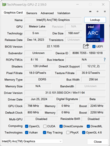

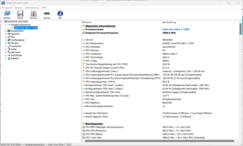
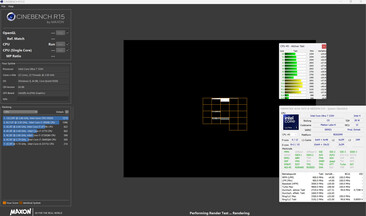
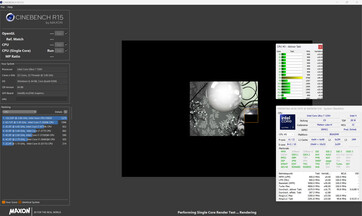

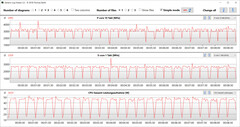
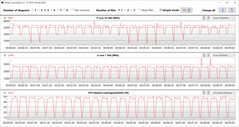
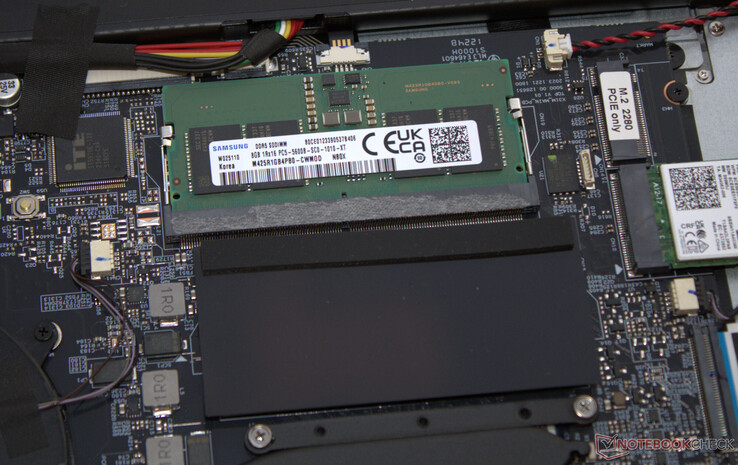
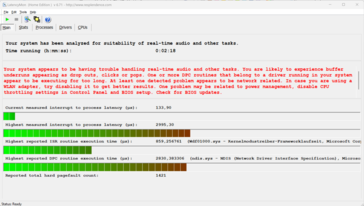

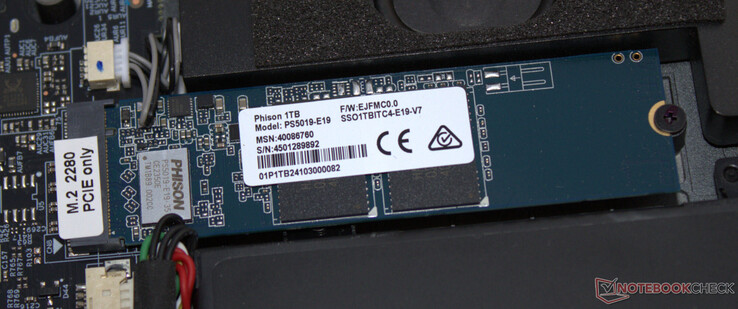
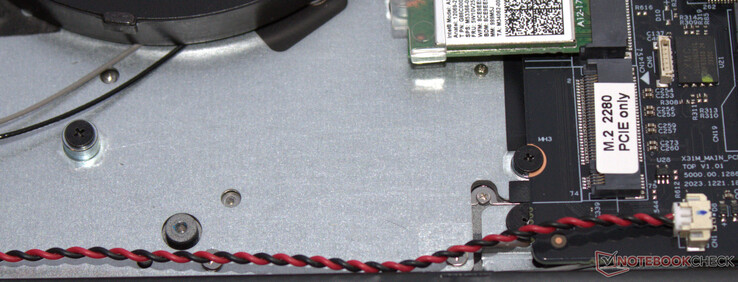

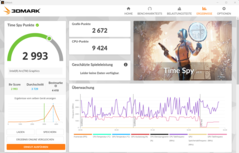
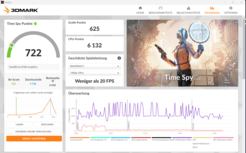
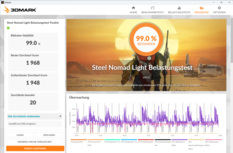
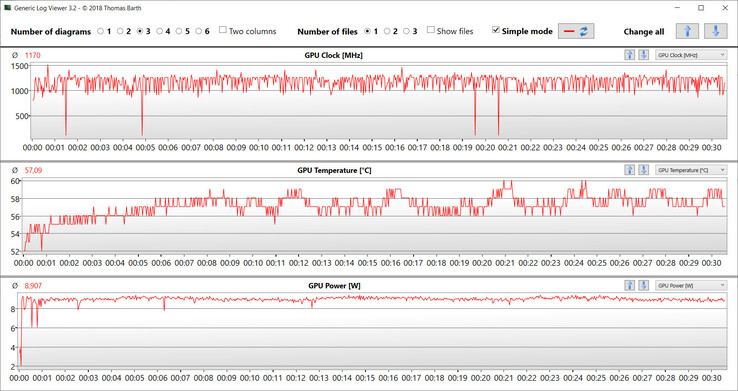
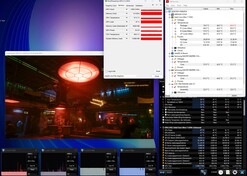
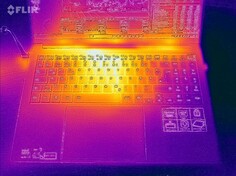
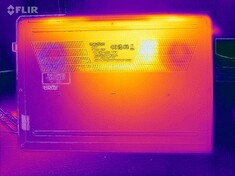
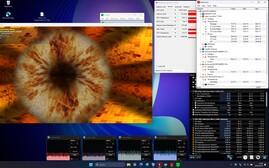
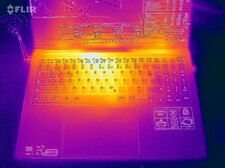

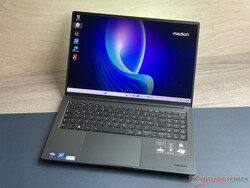
 Total Sustainability Score:
Total Sustainability Score: 








